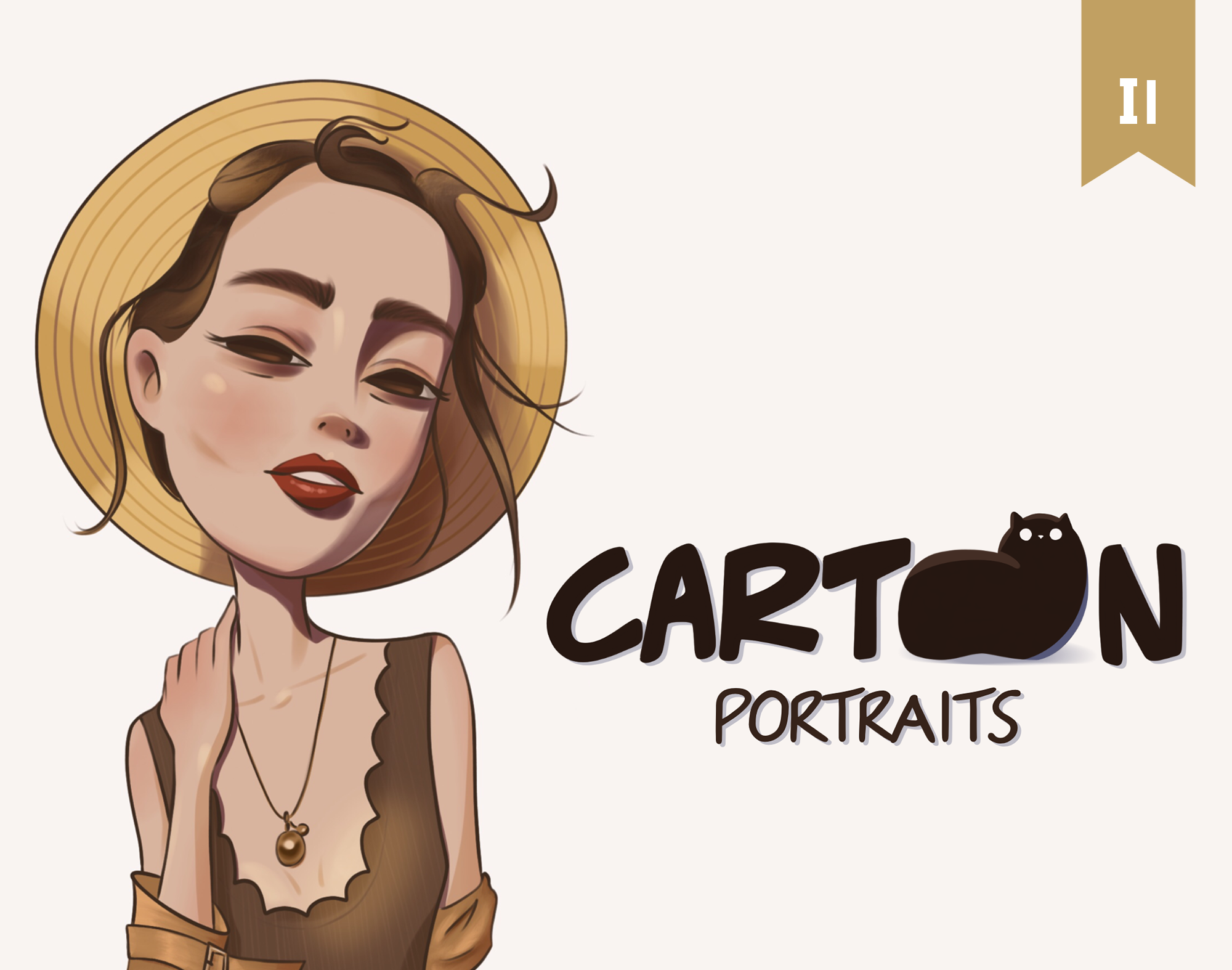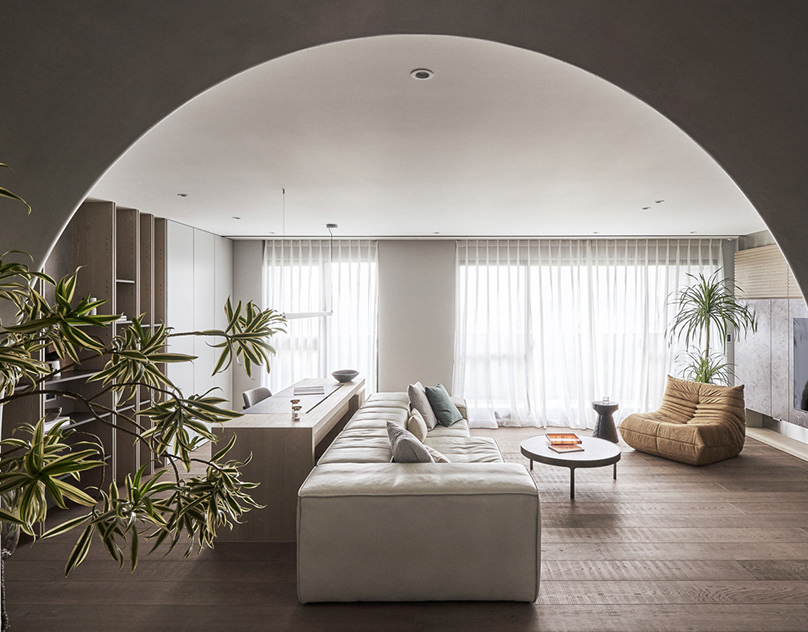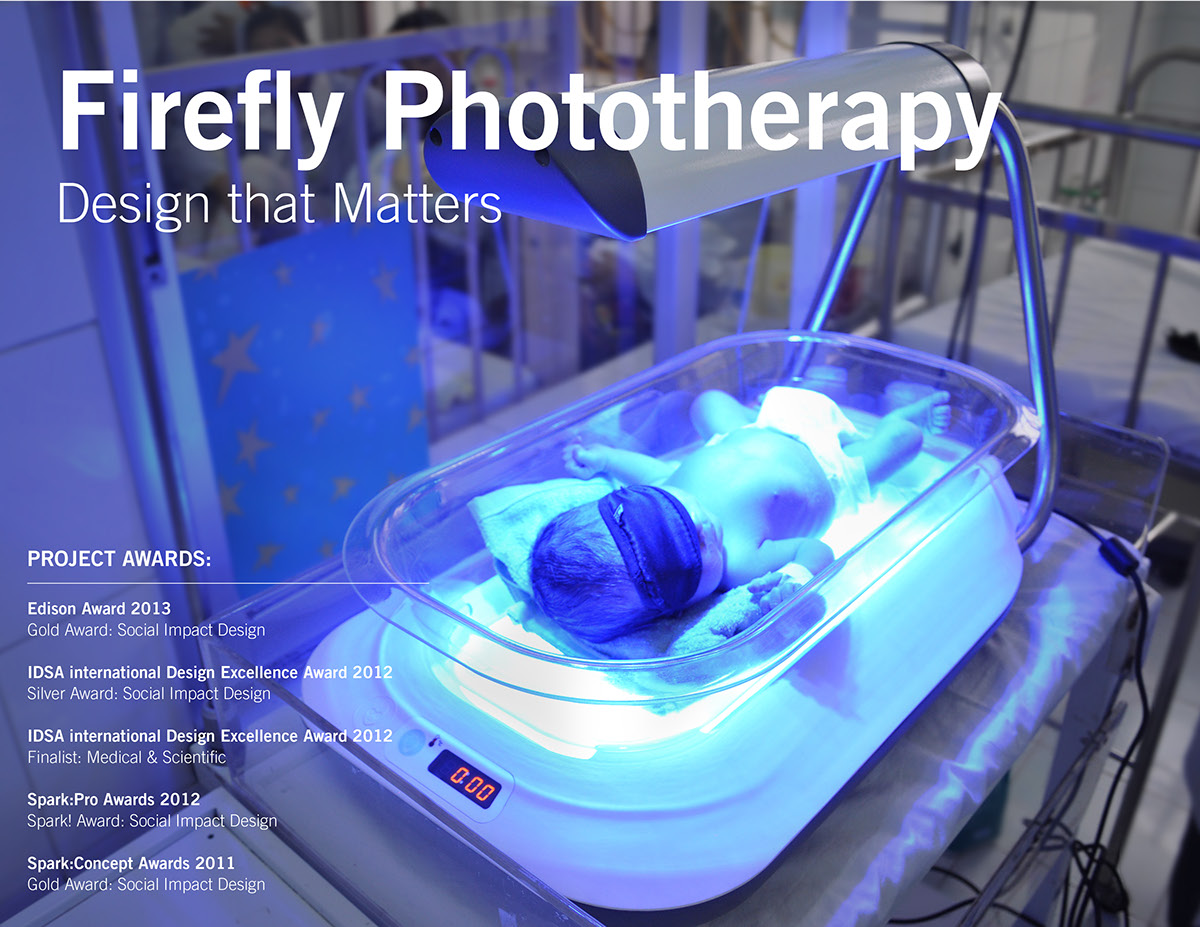
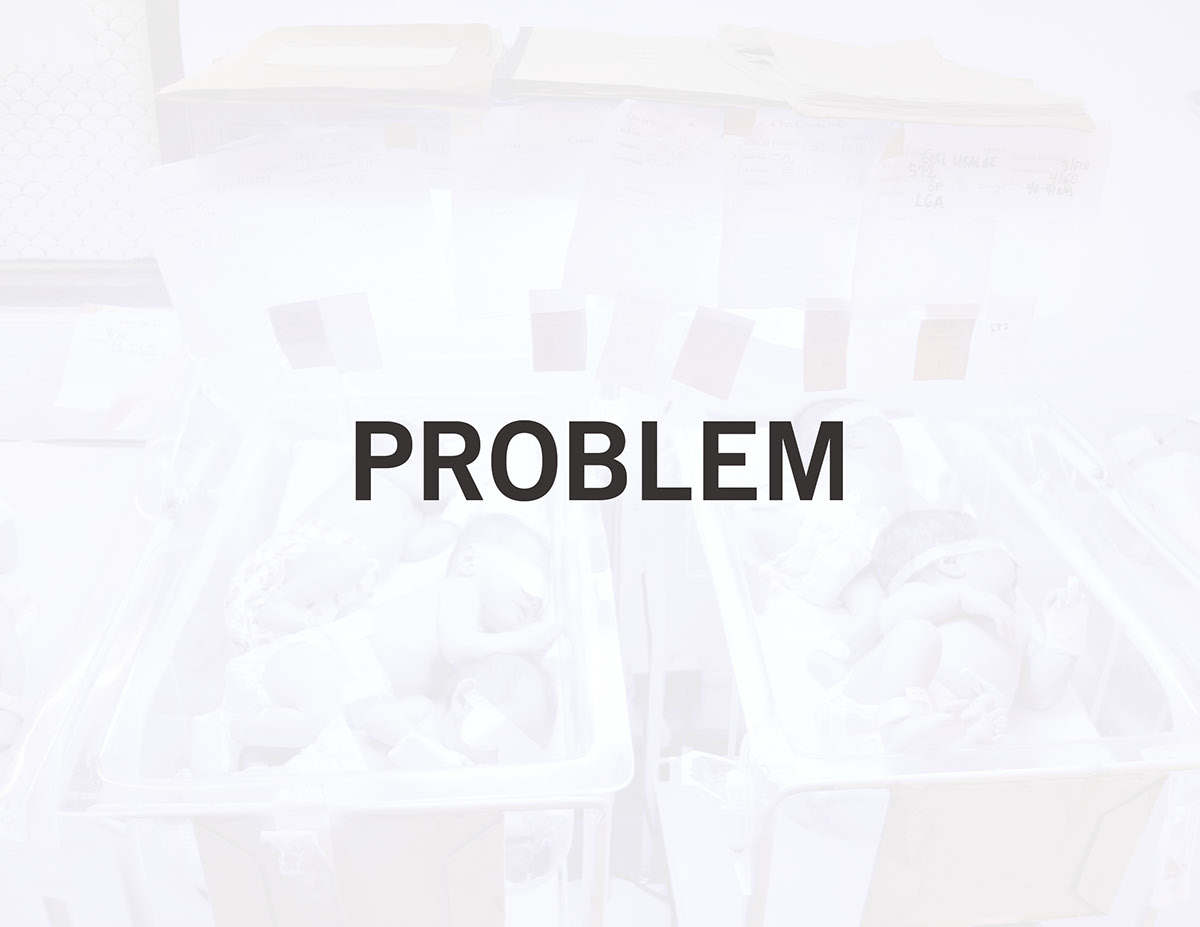

* Exchange transfusions are the only other form of jaundice treatment, the process consists of replacing all of the infants blood through an IV which leads to increased chances of infection.
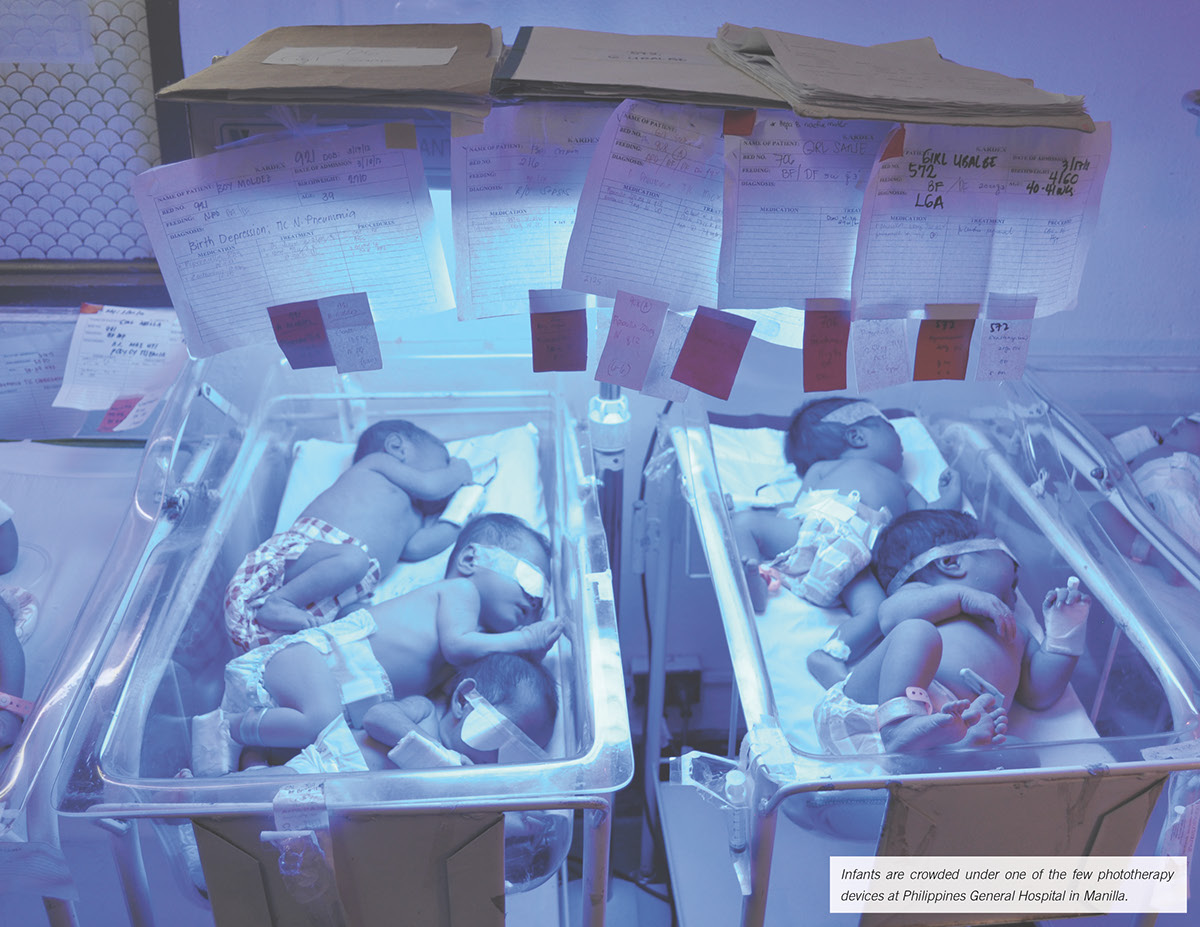
Infants are crowded under one of the few phototherapy devices at Philippines General Hospital in Manilla.
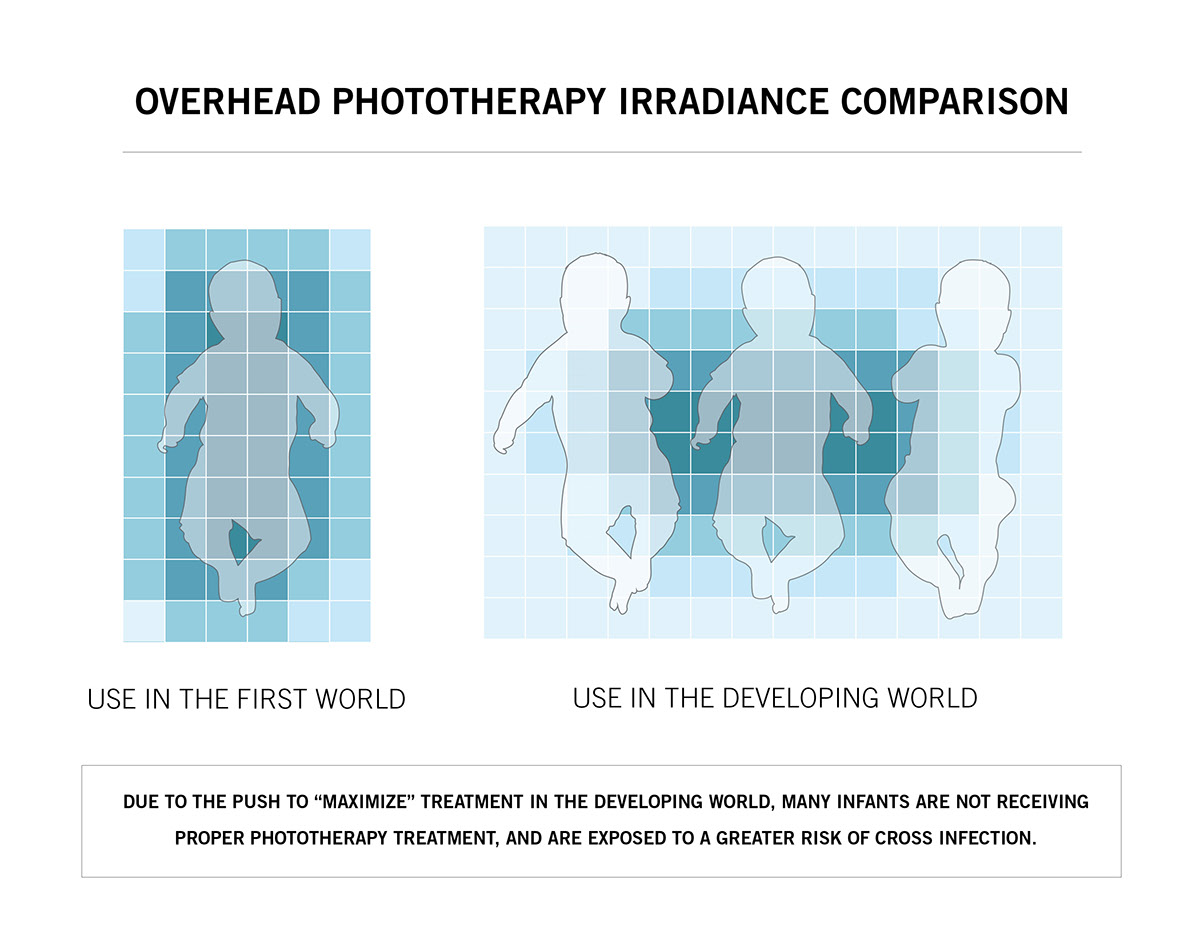
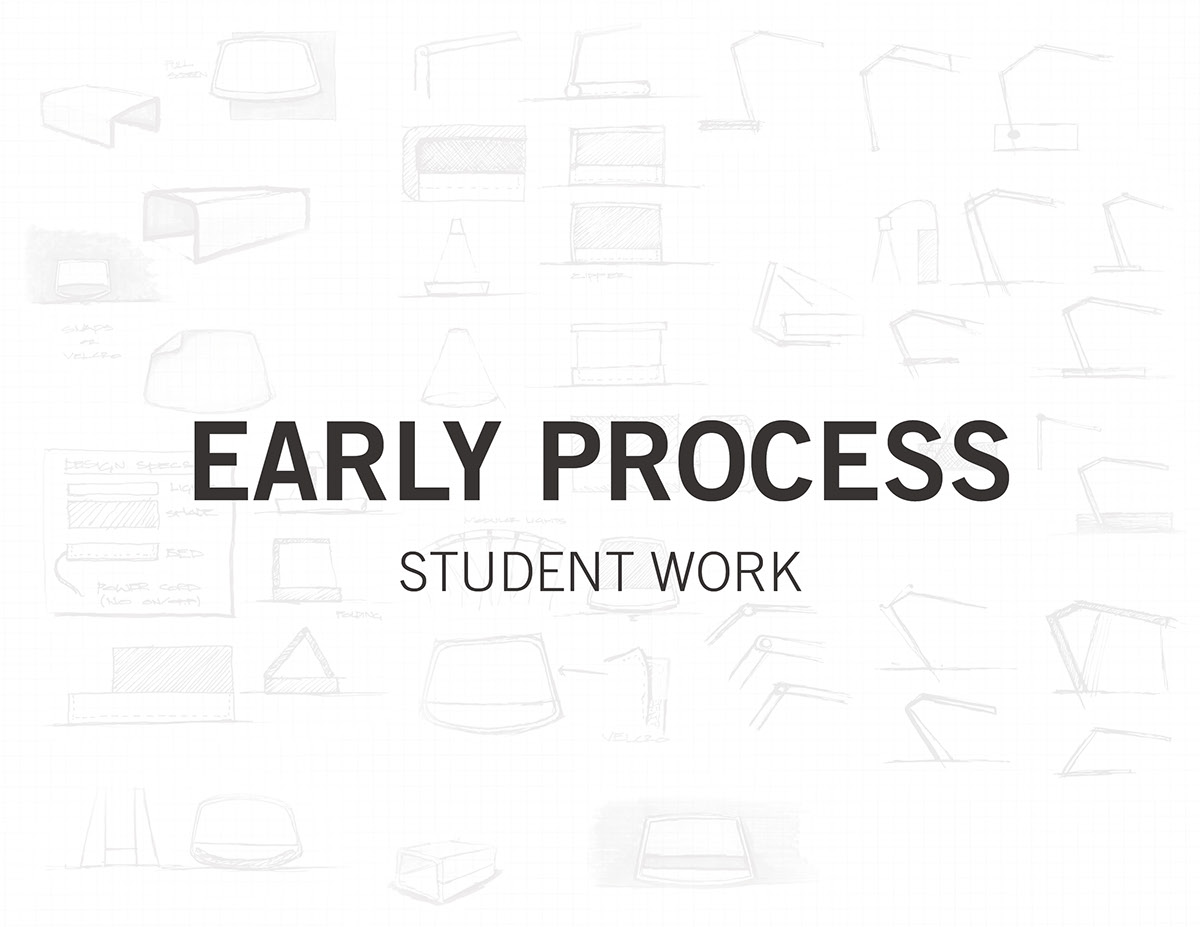
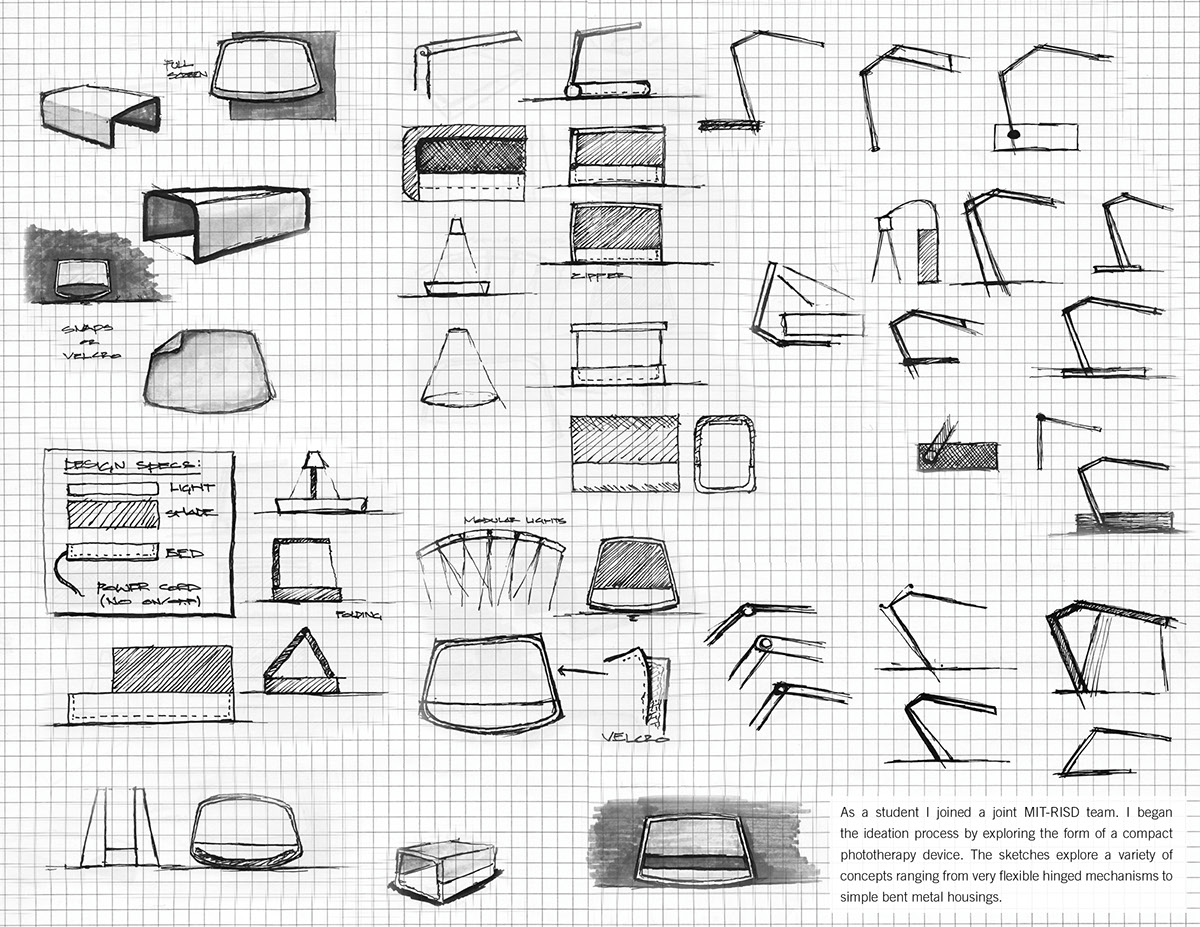
As a student I joined a joint MIT-RISD team. I began the ideation process by exploring the form of a compact phototherapy device. The sketches explore a variety of concepts ranging from very flexible hinged mechanisms to simple bent metal housings.

As the student team progressed, we began to realize that the least expensive design would be made out of sheet metal. Concept H was the most appealing to the team. Despite the fact that it did provide more access, we still thought it was too bulky.
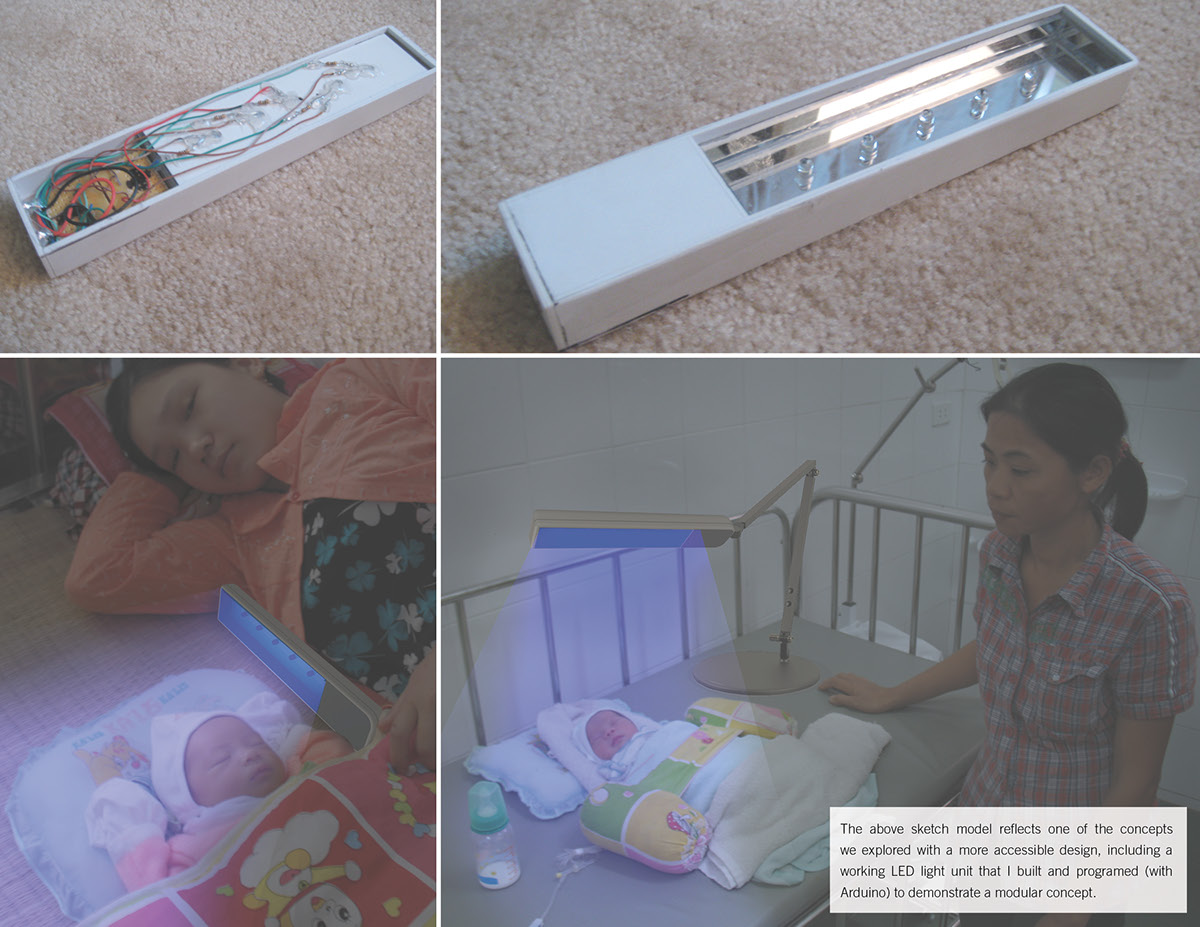
The above sketch model reflects one of the concepts we explored with a more accessible design, including a working LED light unit that I built and programed (with Arduino) to demonstrate a modular concept.

Towards the end of the semester I began to think of the tubular furniture of the 20th century and how a small tube could support the weight of a man.
Our final concept was this simple bent tube design with a sheet metal lighting unit and a simple vacuum formed bassinet for the infant to lay in. We decided on this concept due to its small size, low manufacturing cost, and ease of access to the infant.


Upon starting at DtM I began to create a variety of concepts that had vastly different characteristics which we showed to numerous doctors and nurses throughout Massachusetts. By creating such opposite concepts, we were able to quickly get an emotional response on each design, allowing us to “fail as fast as possible”.
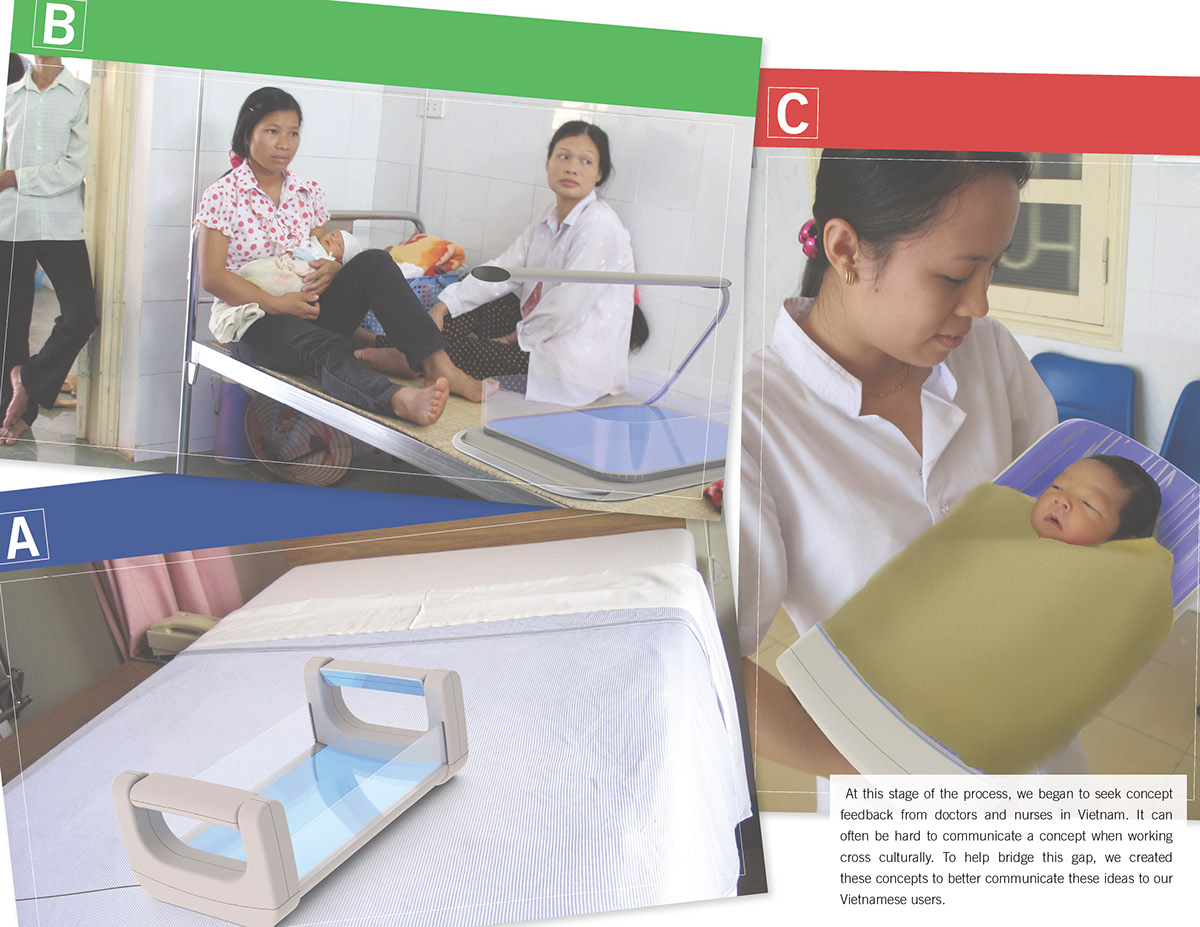
At this stage of the process, we began to seek concept feedback from doctors and nurses in Vietnam. It can often be hard to communicate a concept when working cross culturally. To help bridge this gap, we created these concepts to better communicate these ideas to our Vietnamese users.
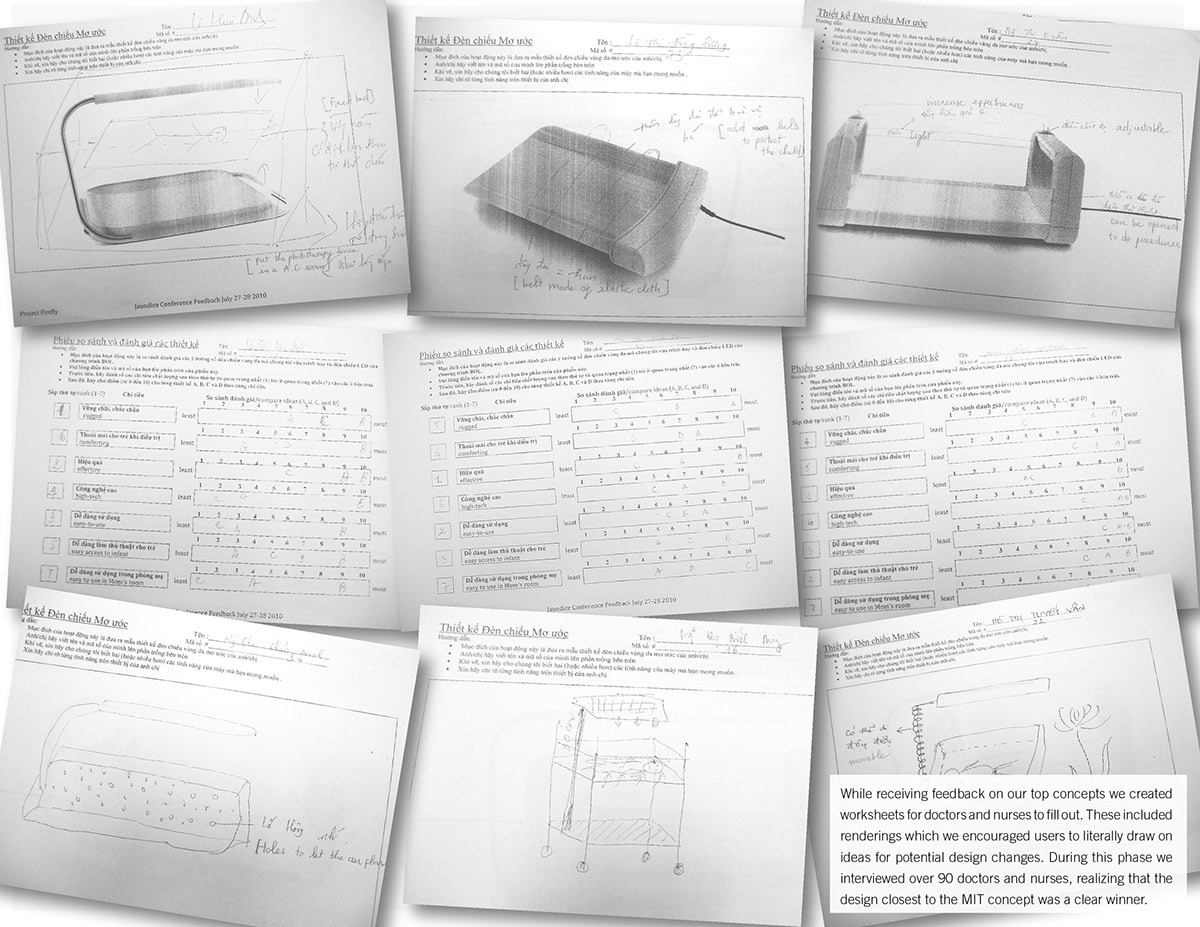
While receiving feedback on our top concepts we created worksheets for doctors and nurses to fill out. These included renderings which we encouraged users to literally draw on ideas for potential design changes. During this phase we interviewed over 90 doctors and nurses, realizing that the design closest to the MIT concept was a clear winner.

Using the feedback we received from the user interviews, we refined the design to create an alpha “looks like” prototype with working LED lights. Having a physical model allowed users to touch and feel the device, leading to much richer feedback. Overall, the team spent two weeks in Vietnam collecting feedback and recording the whole birth-to-treatment life cycle.

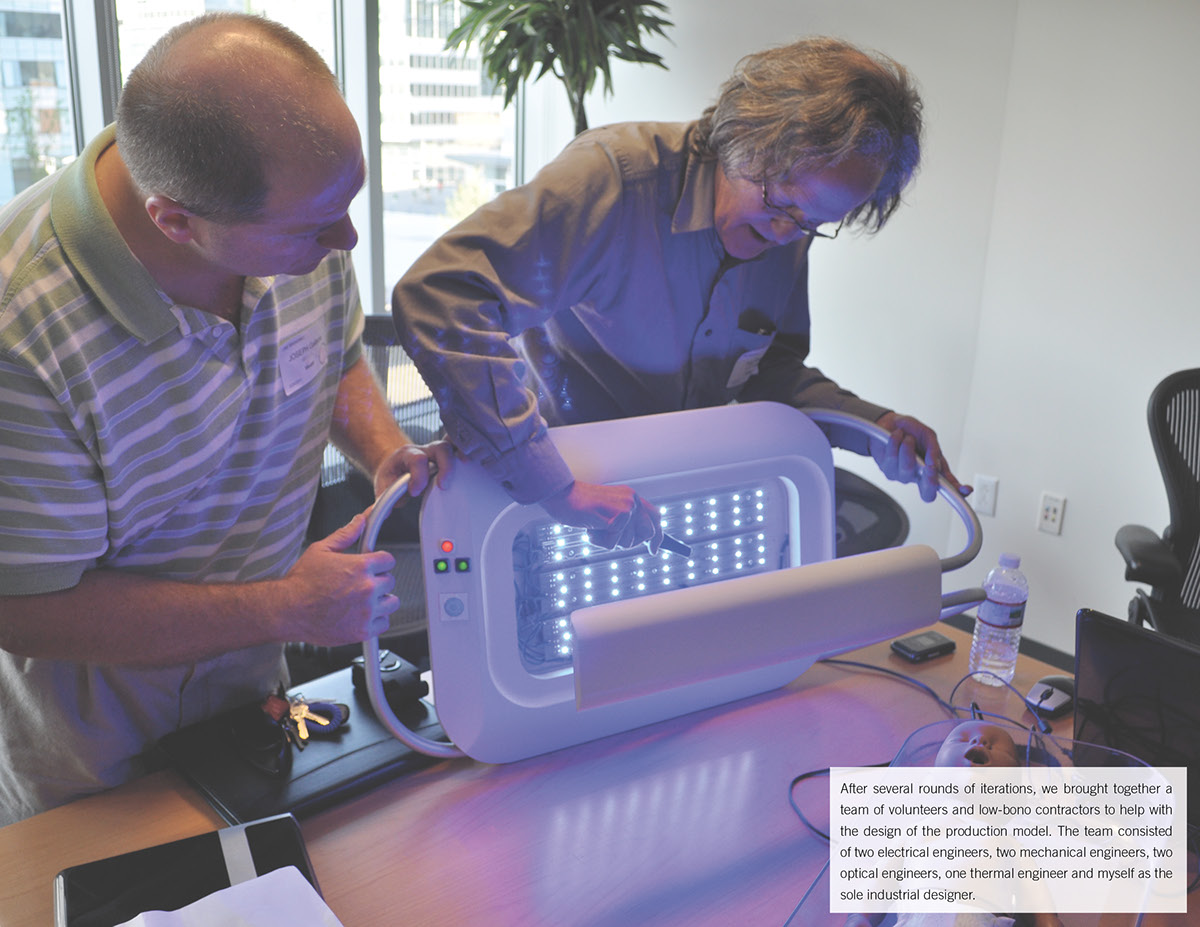
After several rounds of iterations, we brought together a team of volunteers and low-bono contractors to help with the design of the production model. The team consisted of two electrical engineers, two mechanical engineers, two optical engineers, one thermal engineer and myself as the sole industrial designer.
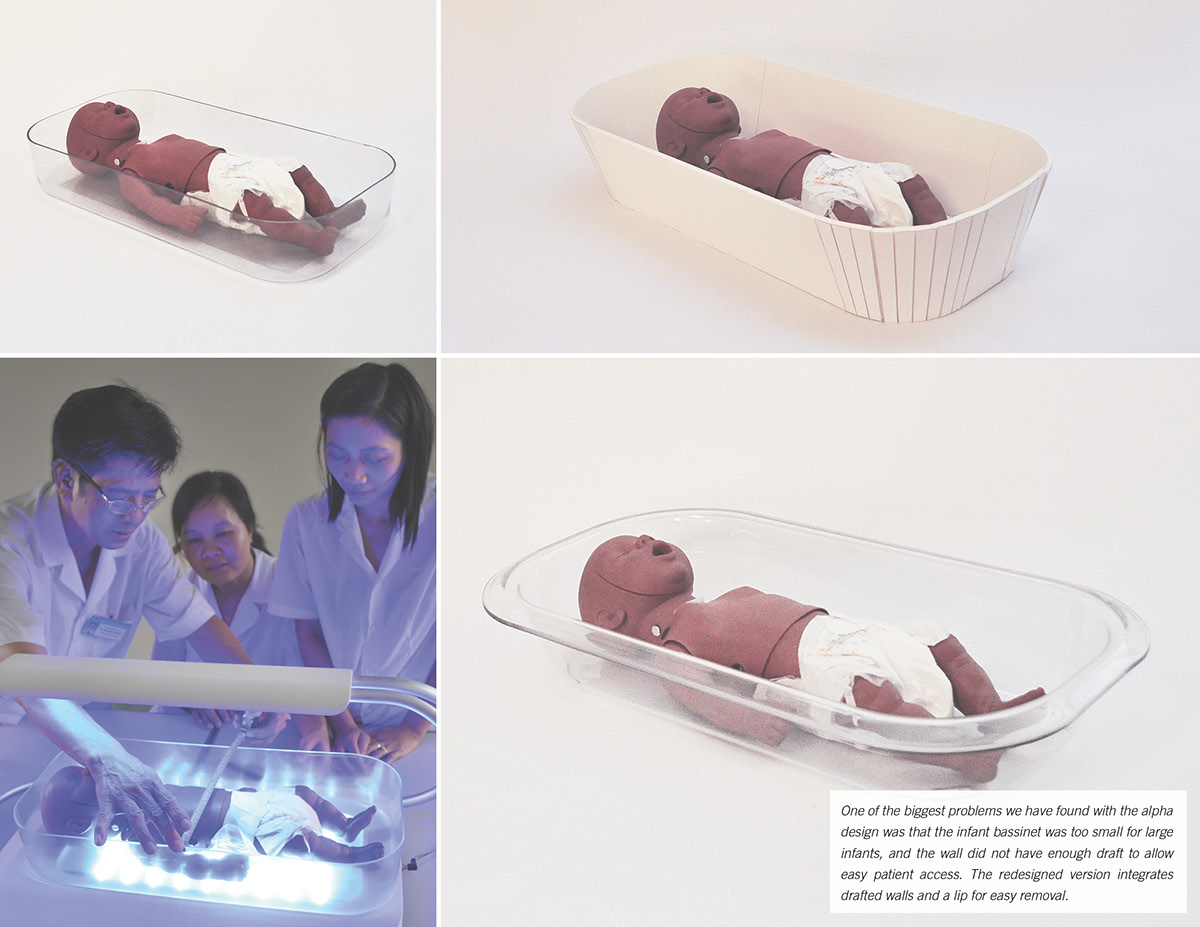
One of the biggest problems we have found with the alpha design was that the infant bassinet was too small for large infants, and the wall did not have enough draft to allow easy patient access. The redesigned version integrates drafted walls and a lip for easy removal.
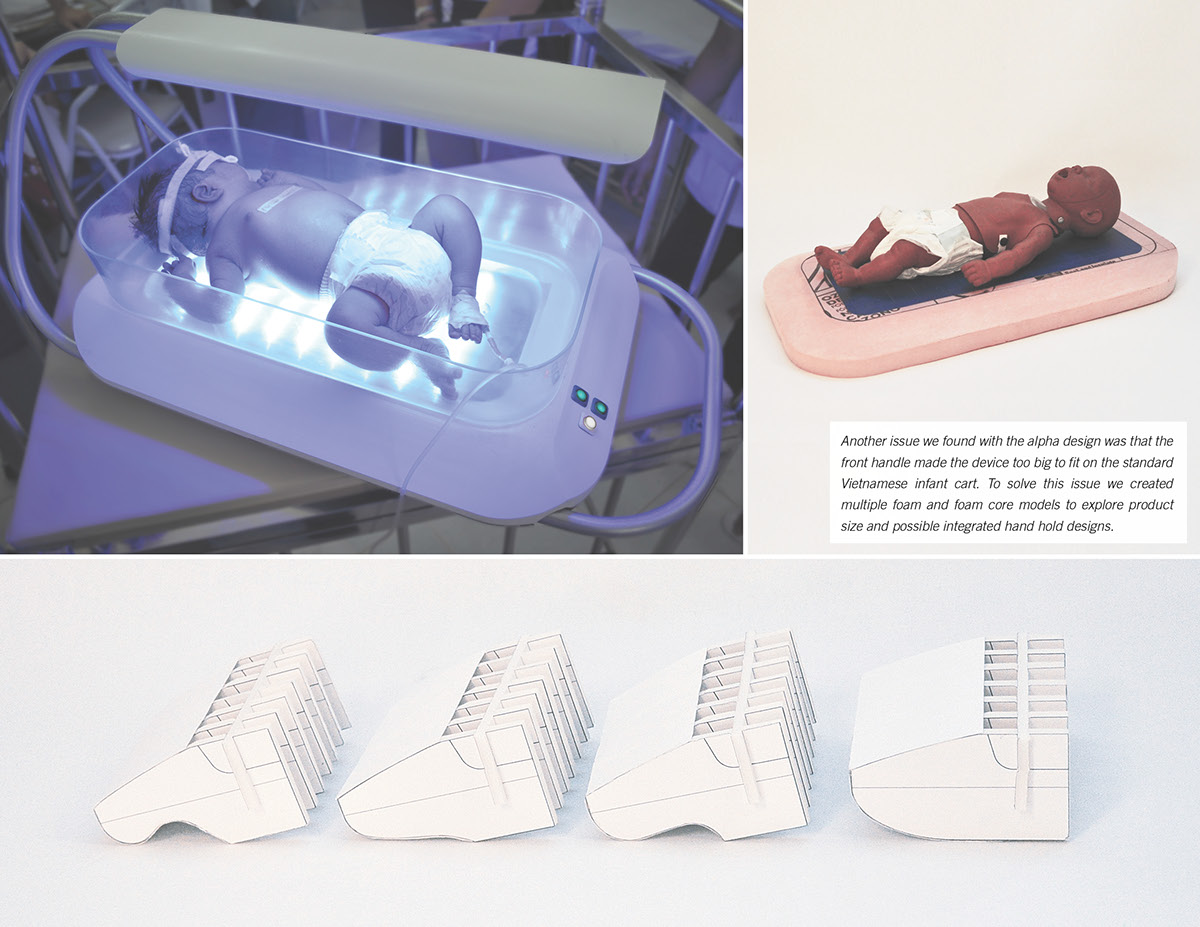
Another issue we found with the alpha design was that the front handle made the device too big to fit on the standard Vietnamese infant cart. To solve this issue we created multiple foam and foam core models to explore product size and possible integrated hand hold designs.
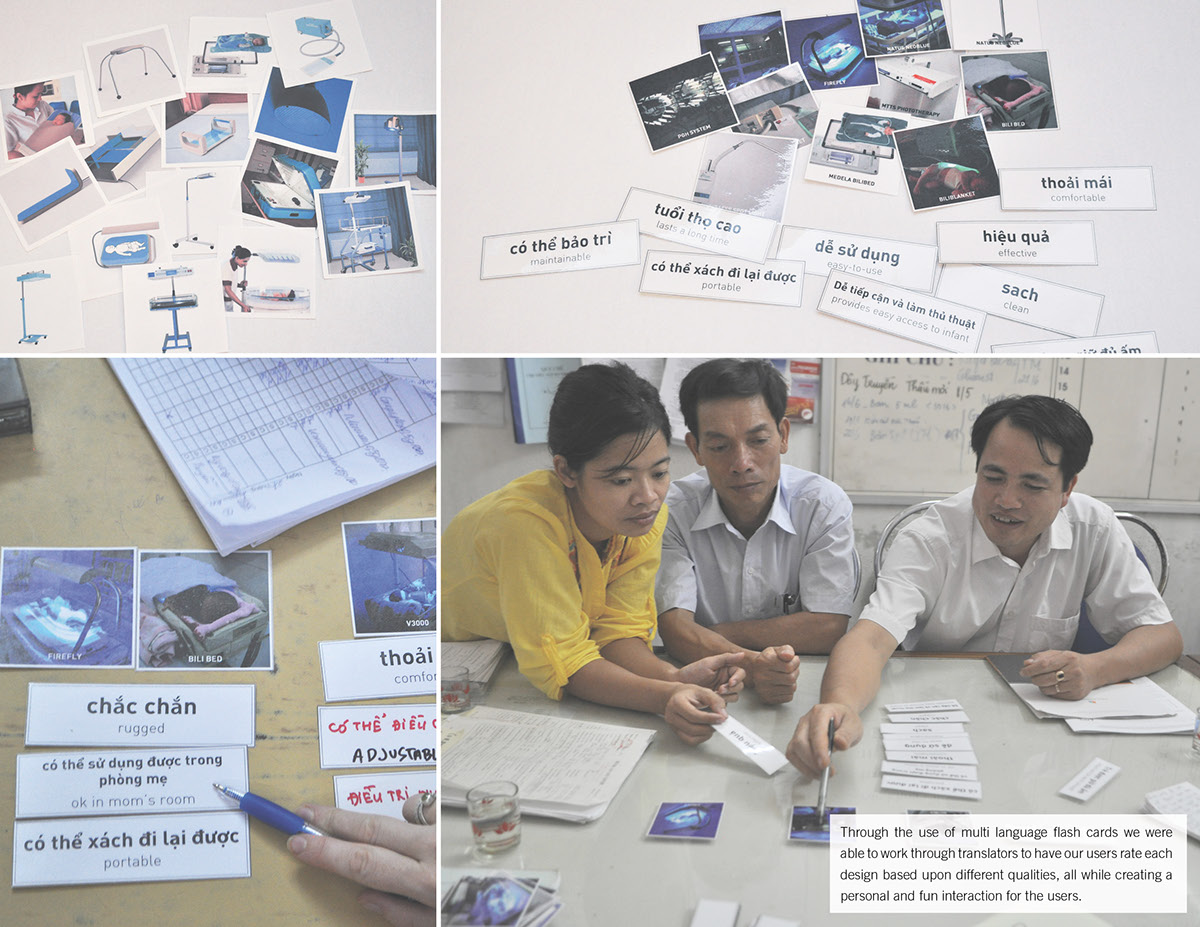
Through the use of multi language flash cards we were able to work through translators to have our users rate each design based upon different qualities, all while creating a personal and fun interaction for the users.

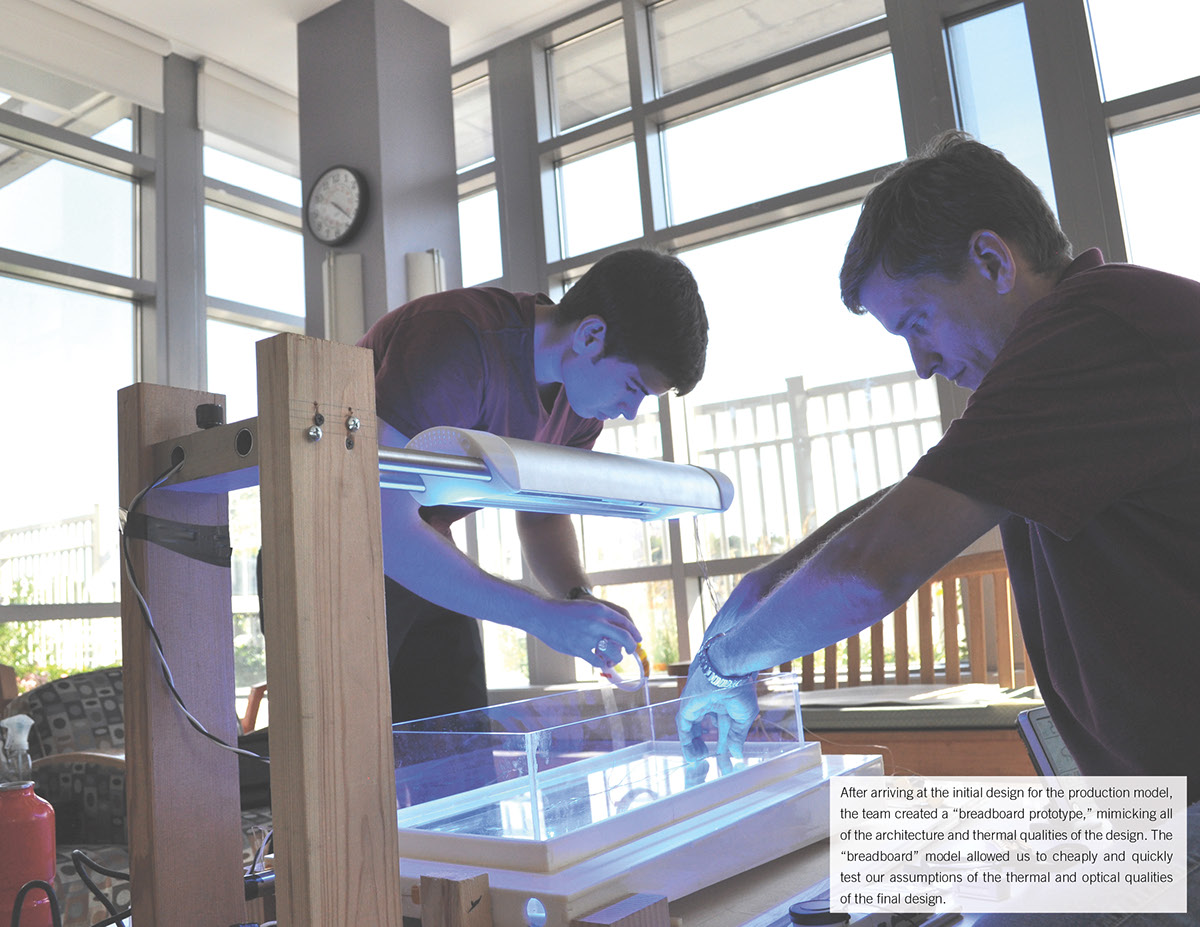
After arriving at the initial design for the production model, the team created a “breadboard prototype,” mimicking all of the architecture and thermal qualities of the design. The “breadboard” model allowed us to cheaply and quickly test our assumptions of the thermal and optical qualities of the final design.


During the design of the “beta” prototype, I was able to work with our two engineers to manage the Solidworks CAD database, as well as maintain both the aesthetic design integrity as well as the critical to function features.

Before sending the units to Vietnam for the clinical trial we conducted extensive thermal and optical tests to verify our assumptions of the device’s intensity and heat management.
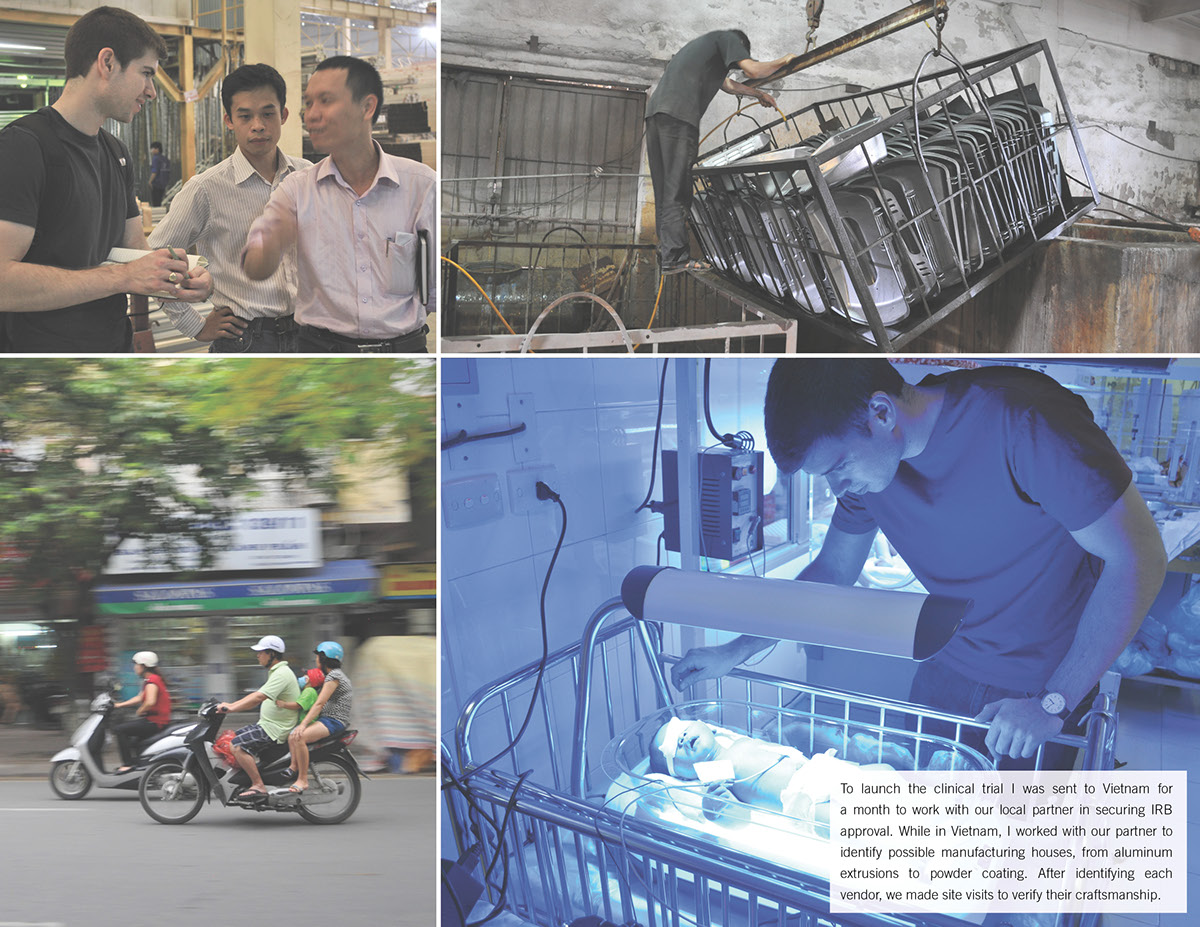
To launch the clinical trial I was sent to Vietnam for a month to work with our local partner in securing IRB approval. While in Vietnam, I worked with our partner to identify possible manufacturing houses, from aluminum extrusions to powder coating. After identifying each vendor, we made site visits to verify their craftsmanship.

Since the clinical trial, Firefly has been used in Vietnam and the Philippines, where I conducted a solo two week research trip. As of February 2013, the two devices in the field have treated over 108 infants and have averted over 15 life threatening exchange transfusions.
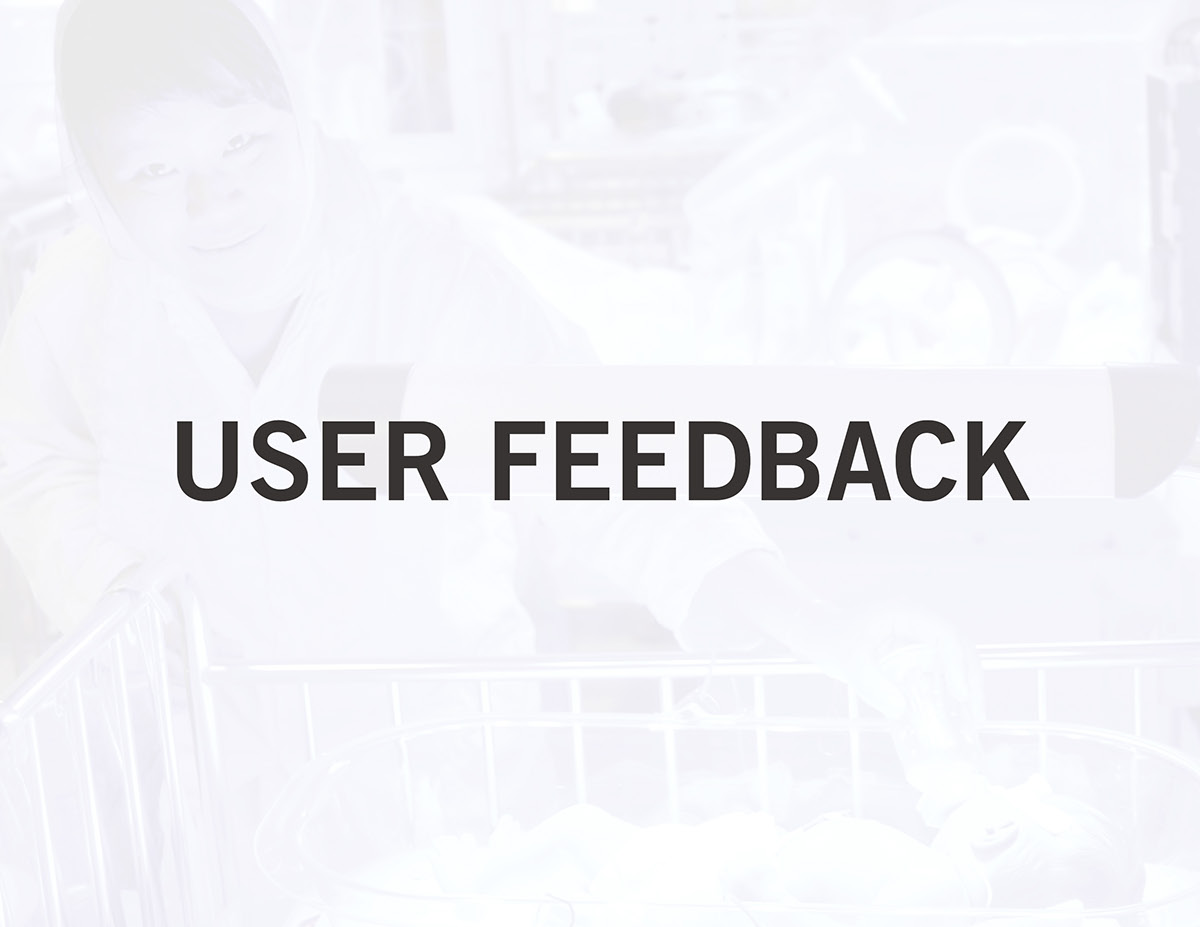

“Firefly creates a safe condition for the patient. The shape is like a bird’s nest wrapping the infant and comforting him. With overhead phototherapy, the baby just feels like they are out in space and the light is hanging over them. In Firefly, the baby feels very safe and families and doctors feel comfortable.”
– Dr. Khuat Thanh Binh, Moc Chau District Hospital
“During these past months, I have noticed that with Firefly, moms never make a mistake in using it. With other phototherapy devices, mothers don’t know how to use them, and often cover their babies with blankets, blocking the treatment.”
– Dang Van Tai, Head Nurse, Moc Chau District Hospital
“I preferred when baby Chuyen was receiving treatment from Firefly compared with the overhead and bilibed because the light is more intense. The machine just looks good, and I think the focused light would be better for the baby, but that is just my opinion.”
- Dang Thi Hanh, Grandmother, Moc Chau District Hospital
“Overall I like Firefly. The top three things I like about it are (1) that the device is effective and (2) it looks beautiful and neat, and (3) it fits only one baby preventing cross-infection.”
- Dr. Pham Do Ngoc Diep, NICU Director, St. Paul General Hospital

“I like that Firefly is smaller than other machines which means it can only treat 1 baby at a time which prevents cross-infection. In some hospitals, its small size might allow Firefly to fit in bed with the mother, and then Mom might be able to take care of the baby.”
- Dr. Thai Bang Giang, St. Paul General Hospital
“Having Firefly in the mother’s room would be great for mother’s nursing and monitoring the baby. It’s very obvious that putting baby with the mom creates a better relationship between the two.”
- Dr. Nguyen Ngoc Loi, NICU Director, National OBGYN Hospital
“I like Firefly because I can lay next to my baby, and always be with him. Before I wasn’t able to be with my baby, and worried if he was ok.”
- Nguyen Thu Tuyet, Mother, Da Nang Hospital for Women & Children
“Putting Firefly in the mother’s room will actually be more convenient for the staff because the mothers will watch the babies and just call the nurse if something is needed.”
- Dr. Nguyen Ngoc Loi, NICU Director, National OBGYN Hospital
___________________________________________________________________________________
To learn more about Firefly please take a look at the below links:



